|
Comet
Schwassmann - Wachmann 3/73P
M57/Ring
Nebula Flyby
Fragmenting
Comet in Lyra
Uploaded
5/7/06

|
This close alignment between
a naked eye comet and a far more distant planetary nebula provided
a unique opportunity to develop a processing technique which
used ONLY global stack processing to the images taken during
the event to yield the final result. Consider this technique
something to try on your images, and you may find the result
is both pleasing and accurate.
Here's The Problem:
A stationary deep sky object (The Ring Nebula and stars) are
to be combined with a rapidly moving comet. Both need long exposure
times to yield a deep noise free image, and yield accurate colors.
Lets first start by showing you my final result, The comets actual
image stack is stationary on the true star field, taken at the
SAME time:
|
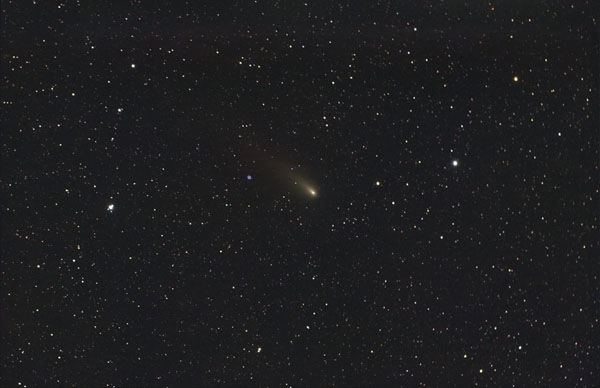 |
The dusty yellow
comet with its diffuse dust tail, appearing sharper on the top
edge contrasts in color to the blues and reds of the hydrogen
emissions of the tiny disk of the planetary nebula, to its left.
See the larger images for the details on this planetary nebula.
C Fragment
Select an image size for a larger view:
1024 x 768
1600 x 1200
|
| This is the series of image
stacks that when properly stacked again using the correct combine
math, will yield the final image presented above. |
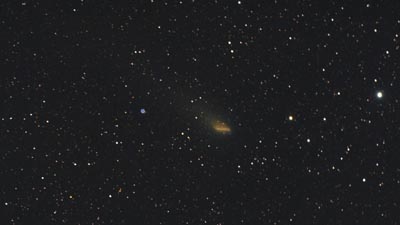 | This
is a normal star aligned image of all 18 frames, each one minute
exposure each. The comet has moved from left to right and is
apparently speeding away from the planetary at a rate of over
1 degree per day. You can see that the comet is quite yellow
in color from dust. | 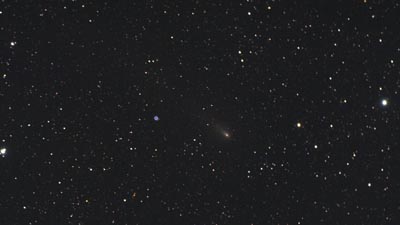 | In
this image, the 17 stack above was combined using darken to produce
a low noise, and the moving comet was automatically replaced
by the sky from the other frames. Next, we combine this 17 stack
frame with the first single frame using the lighten combine method.
This yields one first comet image as it was exposed, suspended
in a rich star field. | 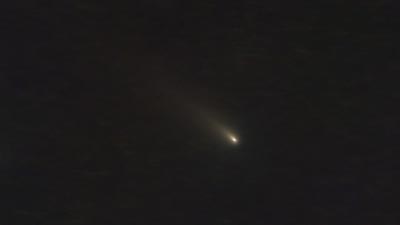 | Next,
the original 17 images were combined with the comets nucleus
in register in Maxim DL using Median combine. This results in
the removal of the trailed stars and leaves only the comets image
stacked 17 times for a dense and colorful image. |
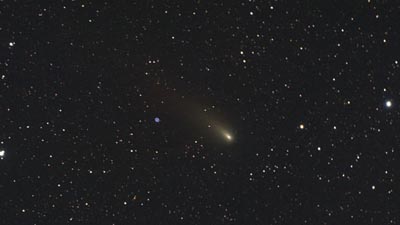 |
The stack of 17
comets is registered directly onto the comets nucleus in the
second image above (the 18th frame) automatically using a 1 star
automatic centroid alignment, to remove any human factors and
the combine type is set to Lighten. This has the result (since
the backgrounds are set exactly the same) to sum in the remaining
exposures onto the first image in a complete registered stack.
|
Instrument: Stellarvue SV80s with TR2008 Focal Reducer/FF
Platform: Astrophysics 1200 QMD
CCD Camera: Canon 10D unmodified
Guider: none
Exposure: 18x1m each to avoid trailing of comet against stars
Location: Payson, Arizona
Elevation: 5150 ft.
Sky: 8, Transparency 6/10
Outside Temperature: 45 F
Processing Tools: Maxim DL, Photoshop, PixInsight
HOME GALAXIES EMISSION NEBS REFLECTION NEBS COMETS
GLOBULARS OPEN CLUST PLANETARIES LINKS
|
|